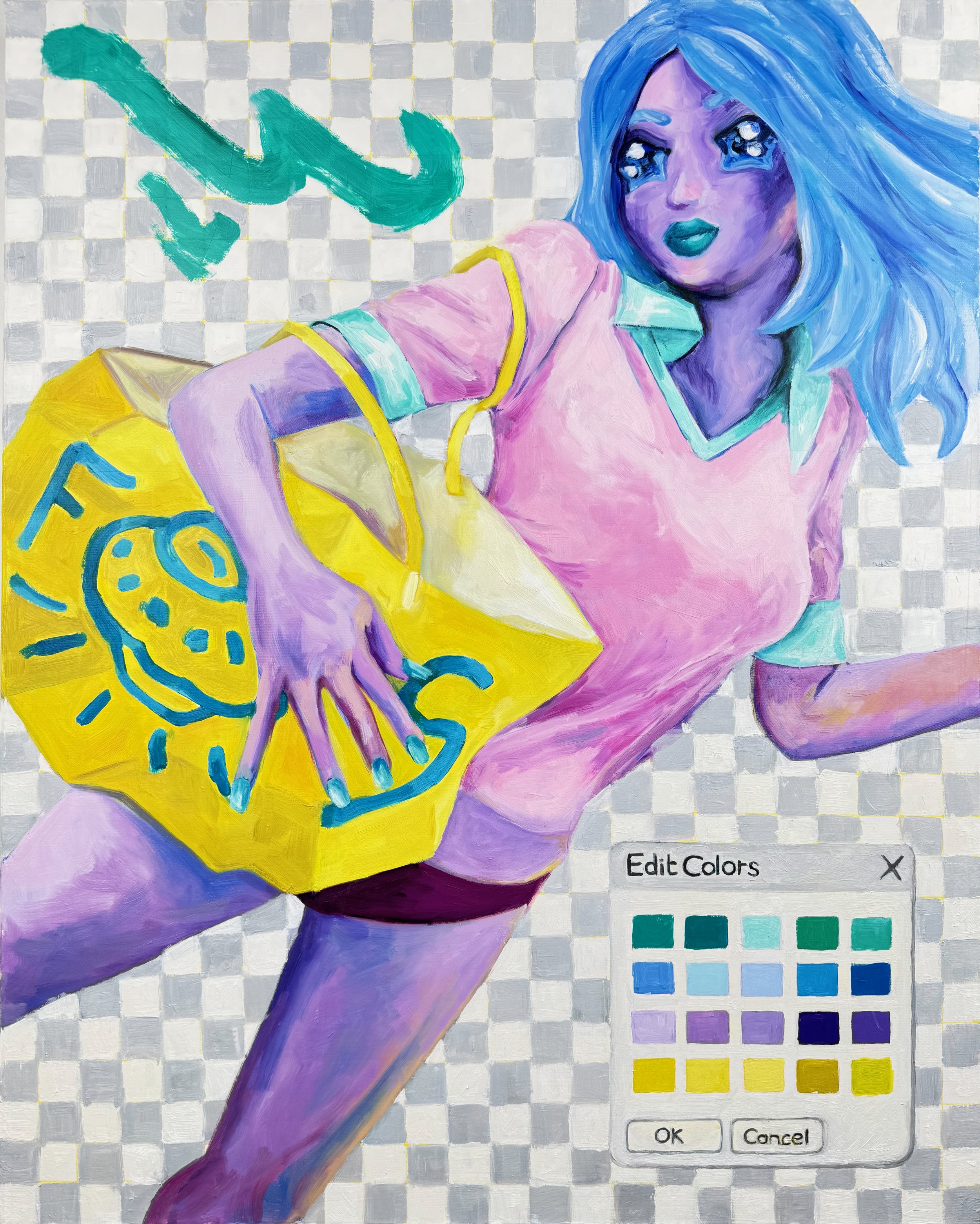ABOUT
Marzipan Physics is the pseudonym of Jennifer Ross (b. 1972, London, England). She is a visual artist based in New York City. She received her BA in 1994 from Yale University and has exhibited her work in group shows throughout New York City , at galleries including :iidrr Gallery, One Art Space, Con Artist, Lazy Susan Gallery, Lucas Lucas Gallery,. Superchief, Queens Arts Collective, 3rd Ethos Gallery, and venues including Five Points Festival, Theater for the New City, Bowery Poetry Club, .and The William Vale Hotel , as well as Gallerie Iham in Paris, France.
Ross’ work has been written about in publications including Up Magazine, Sold Magazine, and Bushwick Daily.
Her long career as a UX/Visual Designer, which spans the infancy of the web to the present day, informs her art practice.
ARTIST STATEMENT
Marzipan Physics is the pseudonym of American artist Jennifer Ross, whose paintings are populated by candy-colored extraterrestrial characters from an elaborate, zany sci-fi universe. Layered with elements from digital interfaces and video games, with poses appropriated from luxury handbag ads and classical paintings, they explore the intertwining of human consciousness with technology, the role of narratives and world-building in how we process reality, and the creative fruits of ongoing cross-cultural conversations.
Rendered with oil paint in an expressive, painterly style using a vivid pastel palette, these unapologetically girlish figures, with star-shaped eyes and Pynchonesque names, serve as a puckish rejoinder to the pervasive dismissal of all things deemed feminine, in art as well as society at large. Inspired both by Japanese animé/manga and their Western counterparts, as well as historical precedents (Ukiyo-E and Impressionism), the paintings reflect Ross’ interest in how encountering different ways of seeing can evolve creativity.
The interface-design elements in the compositions, as well as the rendering of certain forms in a “low-poly” style that evokes Cubism, both reveal an important part of her process—the creation of the reference images via 3D modeling software—and reflect the inescapable nature of human-digital interaction, and the impact that it has on our lives. The work is informed by her long career as a User Experience Designer, which sensitized her to the problematic nature of a corporate screen-mediated existence, and ultimately led her to find the antidote in the materiality of painting.

